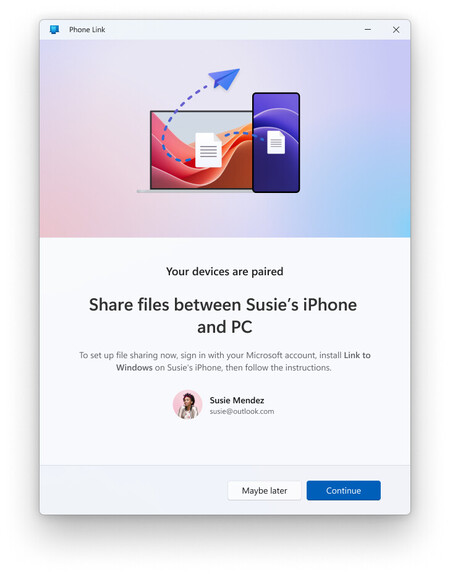One of the greatest benefits of the Apple ecosystem is AirDrop. This transfer system lets you move videos, photos, files, and other content between your iPhone and Mac wirelessly in seconds. But transferring images, videos, or files from an iPhone to a Windows PC is much more complicated. It's not as simple as plugging your iPhone into your PC via USB and calling it a day.
Microsoft has found a solution: It’s developed its own version of AirDrop that connects iPhone and PC via Phone Link, a feature previously available on Android. Here’s how it works.
The drama. When you connect your iPhone to your PC to share a photo or video, the iPhone will ask you if you trust the PC, require you to enter the PIN, and then connect. Once it does—and loads, which can take a while depending on the iPhone’s storage capacity—you’ll have to browse through a myriad of auto-generated folders sorted by day and, with luck, find the photo you’re looking for.
Moving files is even more of a hassle. Why? You must use the cloud, iTunes, and a third-party tool. Sharing a PDF from your Downloads folder isn’t as simple as plugging in your iPhone, going to Downloads, and copying and pasting the file. On a Mac, the experience is seamless with AirDrop, but on Windows, it’s more complicated.
 Phone Link.
Phone Link.
The solution. Enter Phone Link, formerly known as Your Phone. This app lets you control your iPhone from your PC and send files wirelessly between your iPhone and PC. Here’s what you need:
- An iPhone with iOS 16 or higher.
- Version 1.24112.73 or higher of the Phone Link app on the iPhone.
- Version 1.24112.89.0 or higher of the Phone Link app on the PC.
- Membership in the Windows Insider program (software in testing).
 Notification that appears on the PC when sending a file from an iPhone.
Notification that appears on the PC when sending a file from an iPhone.
How it works. Microsoft has made the system as simple as AirDrop. To send a file from your iPhone to your PC, open the sharing menu and select Link to Windows. The PC will appear. Click it to accept the transfer. The process works the same in the other direction: right-click on the file on your PC, click Share, and select My Phone.
Currently in testing. Microsoft is rolling out this feature gradually among Insiders, so it might not yet be available to everyone in the program. It’s also expected to take some time before it reaches the majority of Windows users in the stable release.
Images | Callum Hilton | Microsoft



Log in to leave a comment